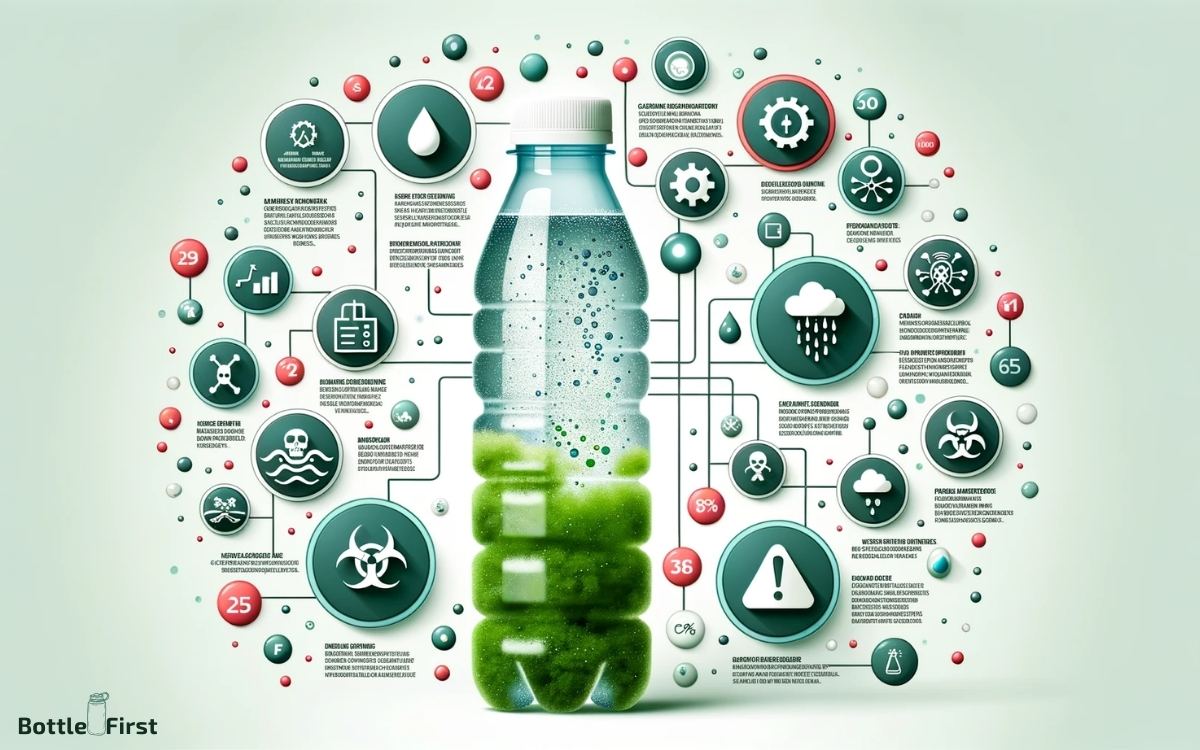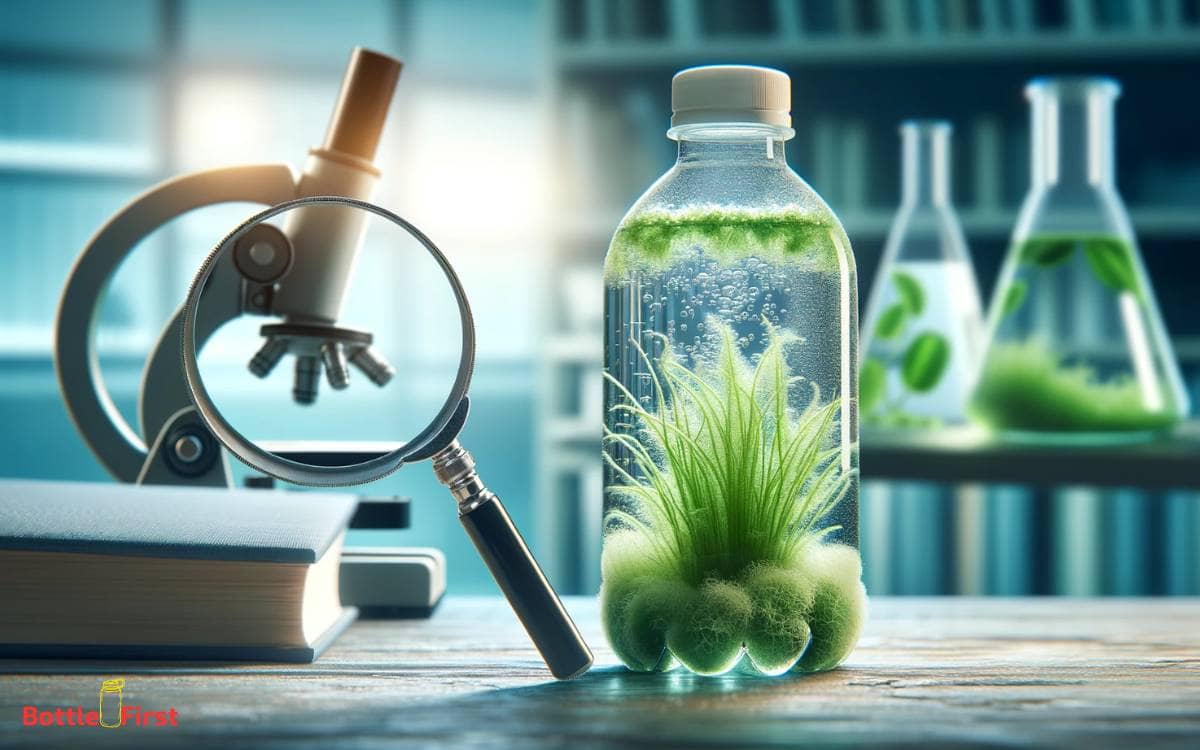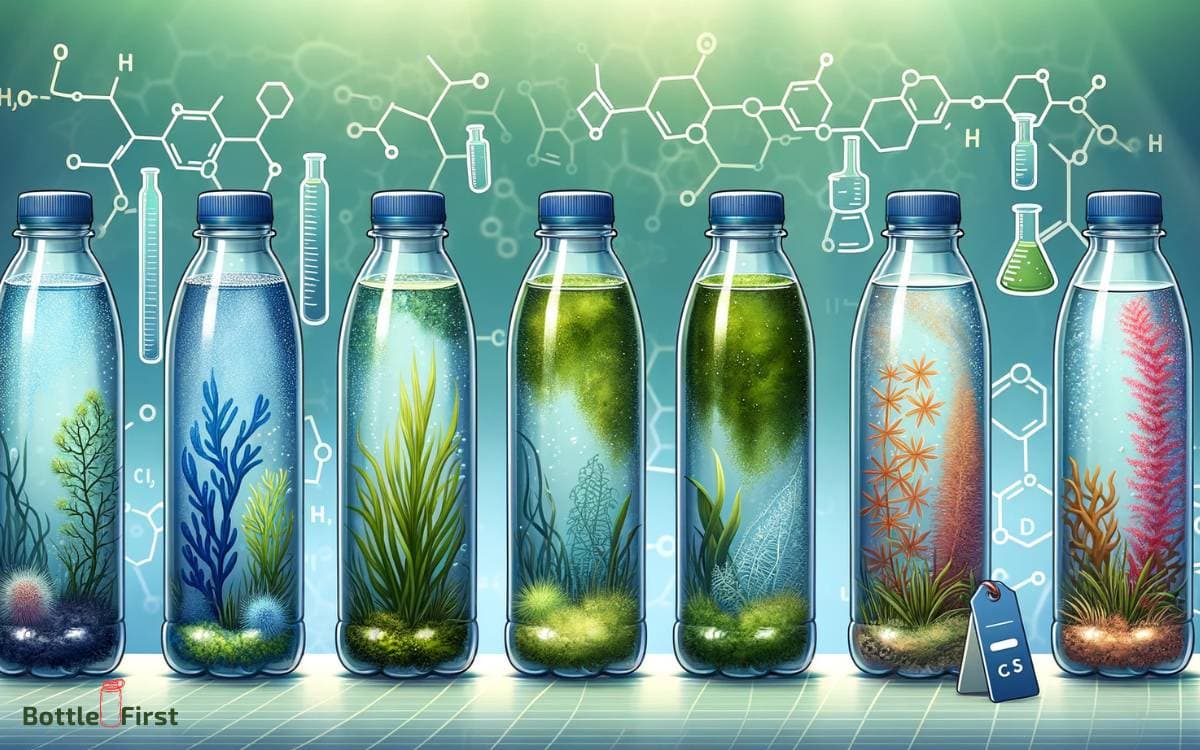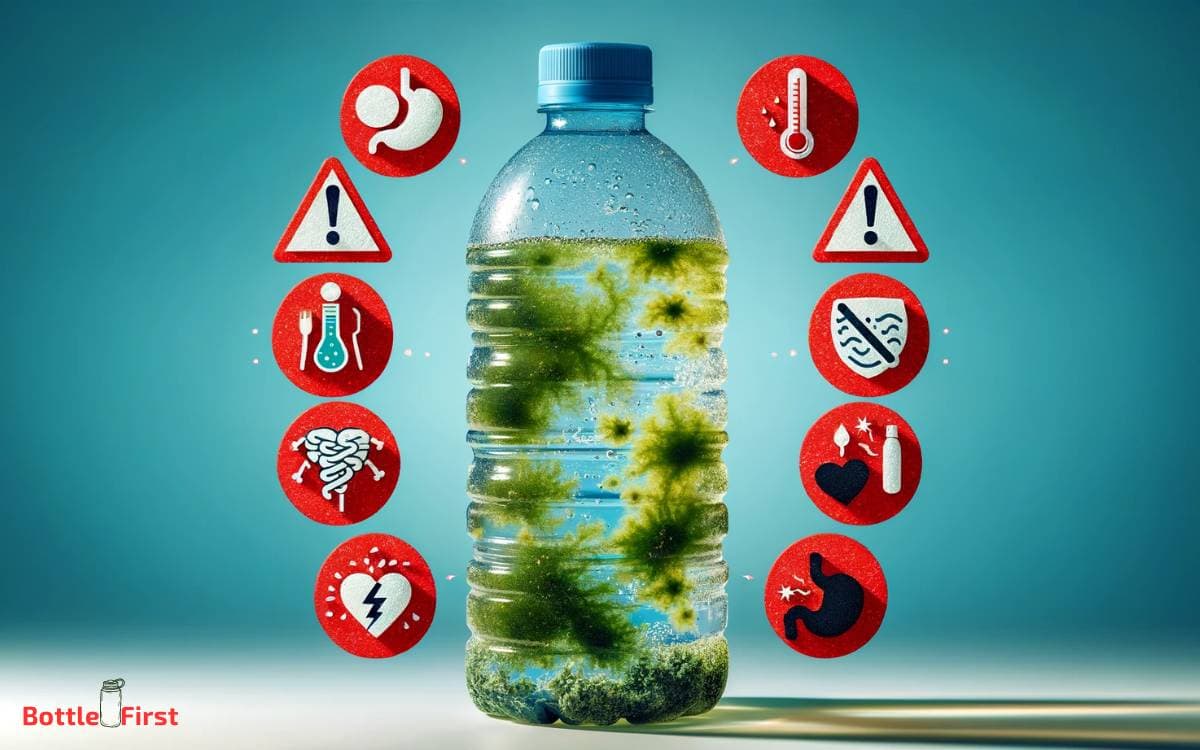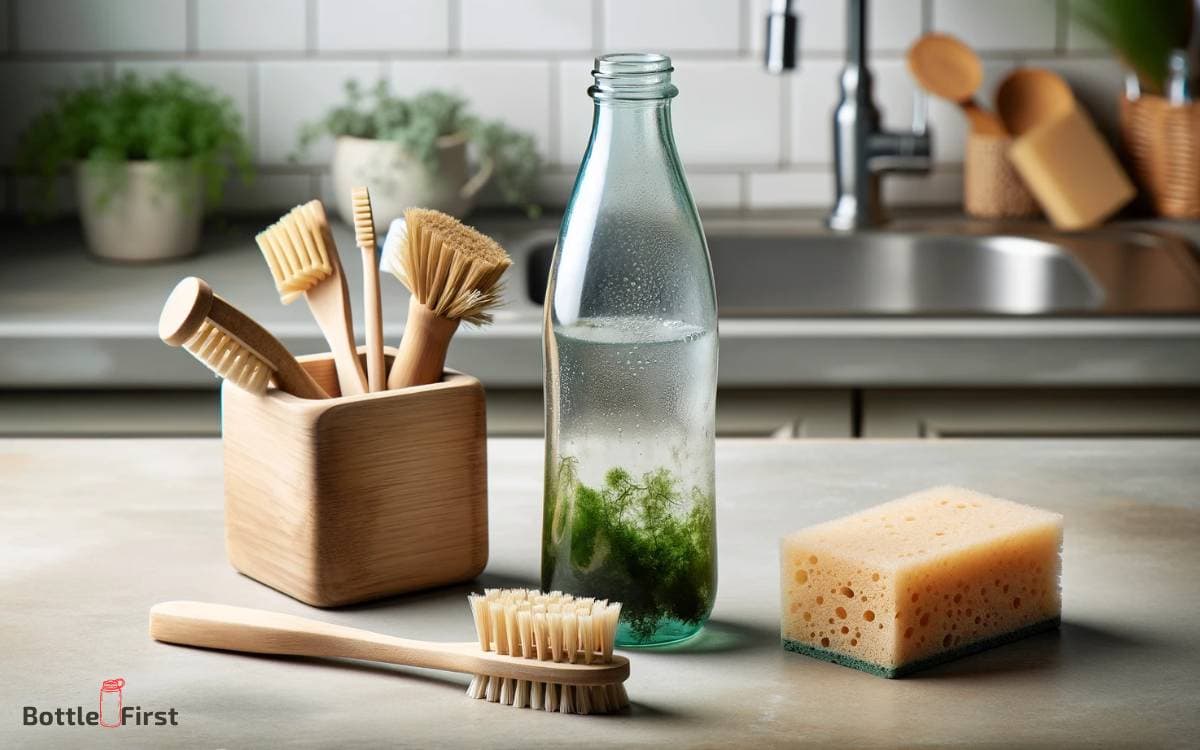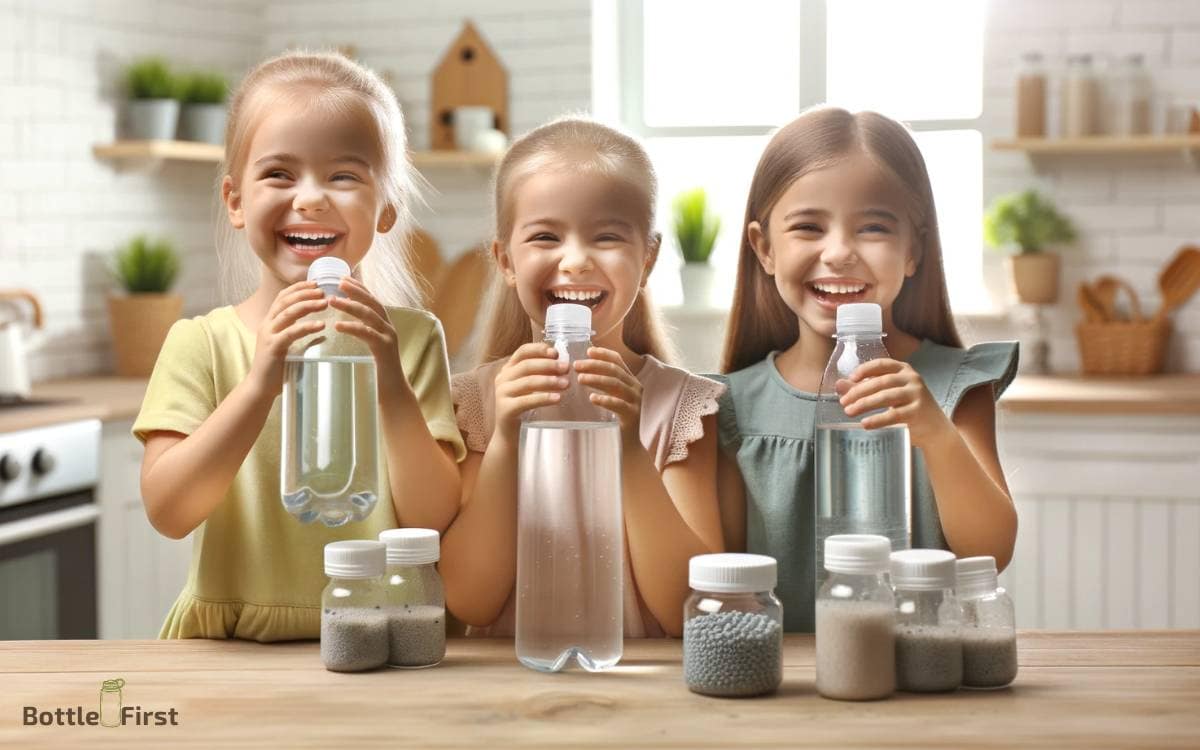Is Algae in Water Bottle Harmful? Explained!
Algae in water bottles can be harmful to your health, potentially causing gastrointestinal discomfort or more severe health issues, depending on the type of algae and one’s immune system.
Algae thrive in environments with sunlight and nutrients. Water bottles can provide such an environment when not properly cleaned or if left in direct sunlight. While not all algae are harmful, some can produce toxins that may lead to health issues.
Ensure your water bottle is algae-free with proper hygiene and storage to maintain a safe hydration experience.
Key Takeaway
Understanding Algae Formation
You can understand algae formation in water bottles by recognizing the factors that promote its growth. When water bottles are exposed to sunlight and warmth, algae find the conditions ideal for multiplication.
Additionally, when water bottles aren’t thoroughly cleaned and dried before refilling, remnants of organic matter provide nutrients for algae to thrive. Understanding these factors can help you prevent algae formation in your water bottles.
By keeping your bottles away from direct sunlight, ensuring they’re thoroughly cleaned and dried between uses, and regularly changing the water, you can create an environment that discourages algae growth.
Taking these simple steps can help you maintain clean and safe drinking water, ensuring that you feel confident and healthy when using your water bottles.
Types of Algae in Water Bottles
You may be curious about the different types of algae that can be found in water bottles. Some types of algae can be harmful and pose health risks if consumed, while others are relatively harmless.
It’s important to understand how to prevent algae growth in your water bottles to ensure the water remains safe to drink.
Harmful Algae Types
When looking for harmful algae types in water bottles, it’s important to be aware of the potential risks associated with certain strains.
One common harmful algae type found in water bottles is cyanobacteria, also known as blue-green algae. This type of algae can produce toxins that are harmful to humans and animals if ingested.
Another harmful algae type to watch out for is golden algae, which can release toxins that are harmful to fish and other aquatic life.
Diatom algae, while not directly harmful to humans, can indicate poor water quality and the presence of other potentially harmful contaminants.
Being aware of these harmful algae types can help you make informed choices about the water you drink and ensure your safety and well-being.
Algae Health Risks
To understand the potential health risks associated with algae in water bottles, it’s important to be aware of the types of algae that can be present and their potential effects on your well-being.
- Certain types of algae can produce toxins that are harmful to your health. Ingesting water contaminated with algae toxins can lead to symptoms such as nausea, vomiting, and diarrhea.
- Long-term exposure to certain algae toxins may have more serious health effects, including liver or kidney damage.
- It’s important to be cautious and avoid consuming water from bottles with visible algae growth, as it may indicate the presence of harmful algae species.
Being mindful of the potential risks associated with algae in water bottles is crucial for safeguarding your health and well-being.
Preventing Algae Growth?
One effective way to prevent algae growth in water bottles is by using a UV-C light sterilization device. This device effectively eliminates algae and other harmful microorganisms, ensuring that your water stays clean and safe to drink.
Another method is to regularly clean and dry your water bottle thoroughly, as algae thrive in moist environments.
Here’s a helpful table to understand the types of algae commonly found in water bottles and how to prevent them:
| Algae Type | Description | Prevention Method |
|---|---|---|
| Green algae | Common in stagnant water, gives a greenish tint to the water | Use UV-C light device regularly |
| Blue-green algae | Can produce harmful toxins, often found in warm, nutrient-rich water | Keep bottle clean and dry |
Health Risks Associated With Algae
Algae in your water bottle can pose health risks that shouldn’t be taken lightly. The presence of algae in drinking water can lead to gastrointestinal issues and other health concerns.
It’s important to take steps to prevent algae growth in your water bottles to ensure the safety of your drinking water.
Algae’s Health Effects
Drinking water contaminated with algae can pose serious health risks to you. It’s important to be aware of the potential dangers associated with consuming water that has been contaminated by algae.
Here are some health risks you may face:
- Gastrointestinal Issues: Algae can cause stomach cramps, nausea, vomiting, and diarrhea, leading to discomfort and dehydration.
- Respiratory Problems: Inhaling algae toxins can result in coughing, wheezing, and shortness of breath, especially for individuals with pre-existing respiratory conditions.
- Liver Damage: Some algae species produce toxins that can harm the liver, leading to jaundice and other serious complications.
- Neurological Effects: Exposure to certain algae toxins can lead to dizziness, confusion, and in severe cases, seizures or paralysis.
Being informed about these risks is crucial for safeguarding your well-being.
Algae in Drinking Water
Are you aware of the potential health risks associated with consuming water contaminated by algae?
Algae in drinking water can produce harmful toxins that pose serious health risks if ingested. Exposure to these toxins can lead to symptoms such as nausea, vomiting, diarrhea, and even liver damage in severe cases.
In some instances, algae-contaminated water can also cause skin irritation and respiratory problems if it’s accidentally inhaled during activities such as showering or swimming.
It’s crucial to be cautious and avoid consuming water that shows signs of algae contamination, such as a greenish tint, unusual odor, or unusual taste.
If you suspect that your drinking water may be contaminated with algae, it’s important to seek alternative safe water sources and consider getting your water tested to ensure its safety for consumption.
Preventing Algae Growth
To prevent the health risks associated with algae, you should take proactive measures to inhibit algae growth in your water sources.
Here are some effective ways to keep algae at bay and ensure the safety of your drinking water:
- Regular Cleaning: Make it a habit to clean water bottles and containers frequently to prevent algae buildup.
- Avoid Sunlight: Store your water bottles in a cool, dark place to discourage algae growth.
- Use Filtered Water: Opt for filtered water to reduce the presence of nutrients that algae thrive on.
- Air Tight Containers: Keep your water in tightly sealed containers to minimize the risk of algae contamination.
Impact on Water Bottle Safety
When assessing the impact of algae in your water bottle on safety, consider the potential risks to your health and the integrity of the bottle itself.
Algae growth in your water bottle can pose health risks as it can contaminate the water, leading to potential illness if consumed.
Additionally, the presence of algae can compromise the structural integrity of the bottle, potentially leading to leaks or breakage. This could result in a loss of the water supply or even injury from broken shards.
It’s important to regularly clean and maintain your water bottle to prevent algae growth and ensure its safety. By doing so, you can safeguard both your health and the durability of the bottle, providing peace of mind when using it for hydration on the go.
Preventing Algae Growth in Bottles
You can prevent algae growth in your water bottle by regularly cleaning and maintaining it.
Here are some simple steps to keep your water bottle algae-free:
- Rinse with hot water: After each use, rinse your water bottle with hot water to remove any residue that could promote algae growth.
- Use a bottle brush: Regularly scrub the inside of your water bottle with a bottle brush to remove any build-up and prevent algae from forming.
- Keep it dry: Make sure to thoroughly dry your water bottle after washing it to prevent moisture from creating an environment for algae to thrive.
- Store in a cool place: Avoid leaving your water bottle in direct sunlight or warm environments, as heat can encourage algae growth.
By following these simple steps, you can ensure that your water bottle remains clean and algae-free.
Cleaning Algae From Water Bottles
To remove existing algae from your water bottle, follow these steps:
- Mix hot water and white vinegar in a bowl or sink.
- Submerge the water bottle in the mixture and let it soak for at least 30 minutes.
- After soaking, use a bottle brush to scrub the bottle and remove the loosened algae.
- Thoroughly rinse the bottle with hot water to remove any remaining vinegar.
- If there is stubborn algae, add some uncooked rice into the bottle along with the hot water and vinegar mixture to act as an abrasive.
- Scrub the bottle again with the bottle brush, using the rice to help scrub off the algae.
- Rinse the bottle with hot water to remove any rice residue.
- It’s important to clean your water bottle regularly to prevent algae buildup, as it not only affects the taste of the water but can also pose health risks.
- By following these simple cleaning steps, you can ensure that your water bottle remains algae-free and safe for use.
Safe Consumption Practices
Maintain good hygiene by regularly cleaning your water bottle to ensure safe consumption practices and prevent potential health risks associated with algae buildup.
Here are some simple yet effective tips to ensure the safety of your water bottle:
- Wash your water bottle with warm, soapy water after each use.
- Use a bottle brush to scrub the interior of the bottle and remove any residue.
- Allow your water bottle to fully air dry after cleaning to prevent bacterial growth.
- Store your water bottle in a cool, dry place when not in use to discourage algae growth.
Conclusion
So next time you pick up a water bottle, remember to check for any signs of algae. It’s like taking a sip of nature’s murky pond, and no one wants that.
Keep your water clean and safe by regularly cleaning and properly storing your bottles. Your health and hydration are worth the extra effort.
Stay algae-free and enjoy your refreshing drink without any worries!
